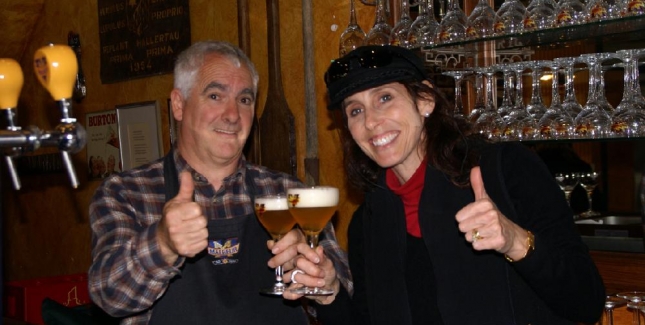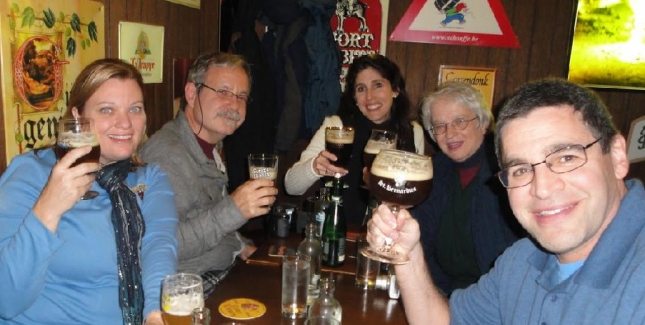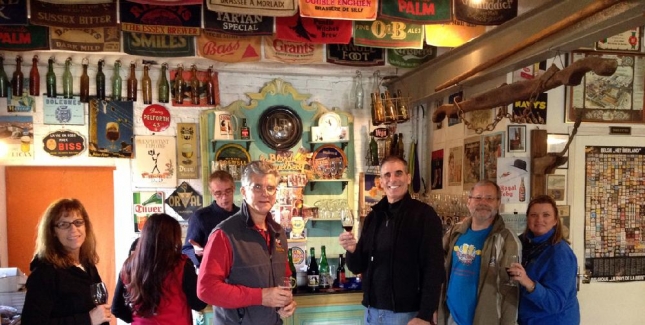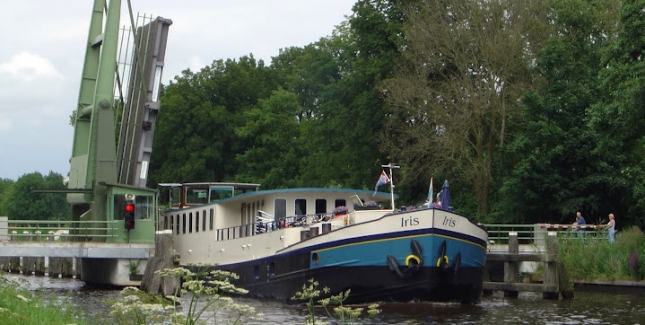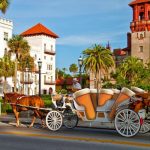3 Things You May Not Know About Prohibition
By Ruth Berman, CEO and BBB (Brains Beyond the Beer) Bon Beer Voyage 3/16
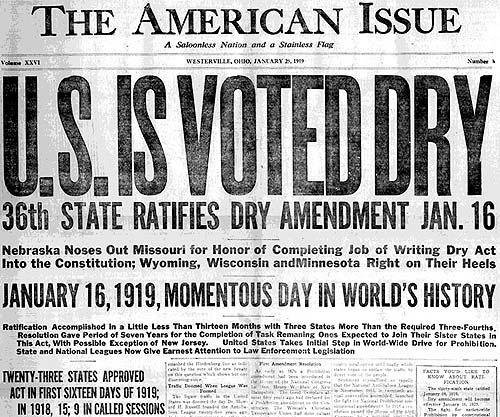
Earlier this month we celebrated National Beer Day here in the US. We are really privileged to live in a day and in a society that celebrates beer not only as part of the culinary landscape but also as a thriving part of our economy. As you know, this was not always the situation. Prohibition absolutely affected the journey of our favorite tipple in history, but maybe not in all the ways that you thought. Here are a few interesting facts to share over your next beer.
- The 18th Amendment did not, alone, create prohibition as we know it.
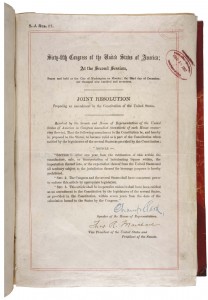
In January of 1919, The 18th Amendment to the U.S. Constitution -also known as the Prohibition Amendment was ratified, thereby prohibiting “manufacture, sale, or transportation of intoxicating liquors… for beverage purposes” as of one year from the date of ratification.
As if the 18th amendment wasn’t bad enough-to make matters worse in October of 1919 along comes The Volstead Act, which managed to pass despite President Wilson’s veto.
The Volstead Act- Also known as the Prohibition Act- was created to aid in the enforcement of the 18th Amendment. It achieved this by defining intoxicating liquor as any beverage over .5% alcohol. It also gave both federal and state governments the right to enforce and prosecute; and listed penalties, i.e. fines and jail time, for various violations.
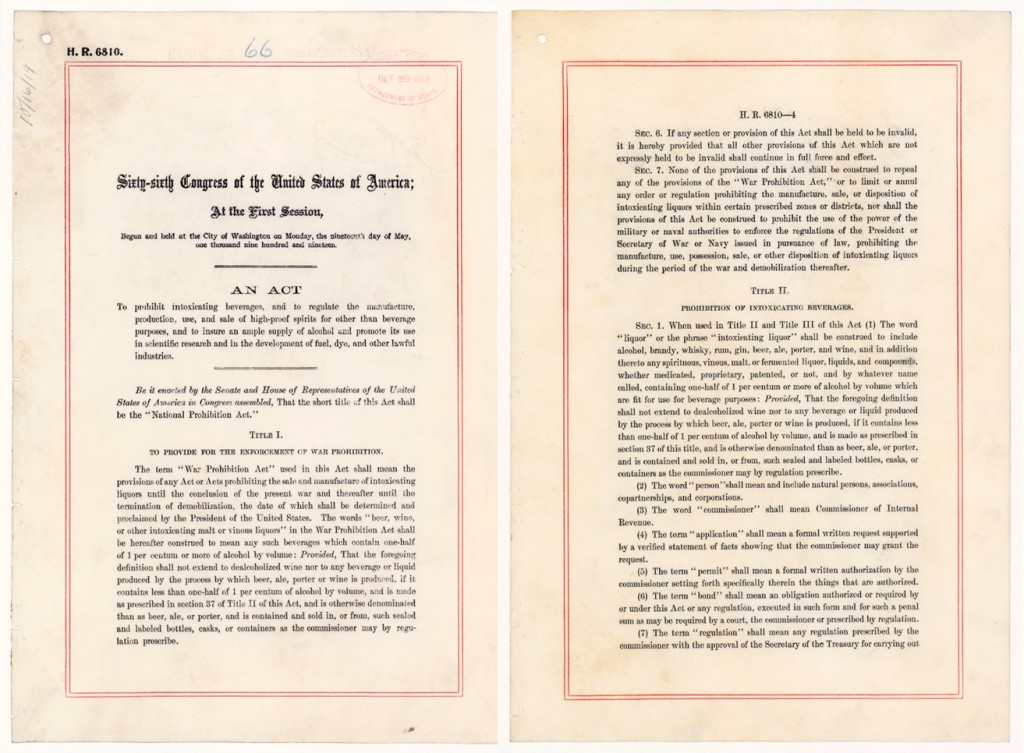
Job A1 10-140 NATF-Volstead Act
So to summarize, the 18th Amendment and The Volstead Act are two separate components of what comprised Prohibition. The 18th Amendment disallowed “intoxicating” beverages to be made, sold or transported, while the Volstead Act defined what exactly was “intoxicating”, thereby giving a standard for which the law could be enforced.
- Prohibition did not actually prohibit consumption of “intoxicating liquors”.

Interestingly enough, if you read through the 18th amendment and the Volstead Act, you will see that technically, one could still legally drink alcohol during this time, since the above only talks about the manufacture, transportation and sale of such beverages and does not mention anything about drinking them.
Bonus Fact 1. This led the thirsty public to get creative in their acquisition of liquor. Hence the Blind Pig. To many of us, this is the name of a beloved beer from Russian River Brewing, but during Prohibition, a Blind Pig was basically a lower class of Speakeasy where people supposedly went to see a show, i.e. an animal show and were given a “free” glass of tipple along with the show entrance.
Bonus Fact 2. Similarly, The Blind Tiger, which we know as an awesome craft beer bar in NYC, was another name for a Blind Pig.
- Although many believe that the demise in US Breweries was due to prohibition, this only played a part in an already rapidly decreasing number of breweries. However, it took a long time to recover from the additional damage done by prohibition.
As history has shown, Prohibition didn’t stop folks from drinking, but they were now drinking what they could acquire in Speakeasies and bars run by gangsters. Some sources say millions of dollars that would have supported the brewing industry went into bootlegging. But while the US did experience a surge in organized crime and the brewing industry in the US flat lined, it had already experienced a steep decline in numbers due to changing tastes of beer drinkers as well as breweries consolidating.
In fact, in 1919 at the start of prohibition, according The Brewer’s Association, there were only 669 breweries in the US, down from its peak of 4131 in 1873. This dropped to zero by 1920 due to prohibition and in 1933 went back up to 331 and then up to 857 by 1941. But then WWII came and we dropped back to the 300s. A solid recovery to pre-prohibition status didn’t really happen until the mid-90’s with the number of breweries hitting 858 in 1995 and continuing to soar ever since.
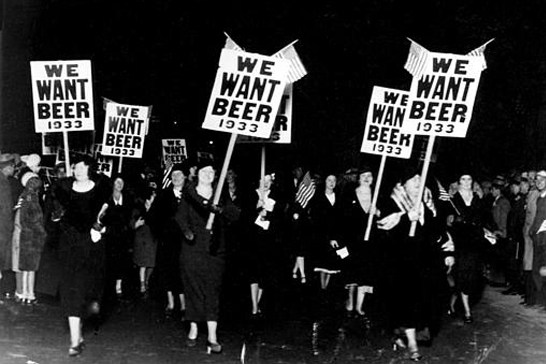
So drink up and enjoy… because…well… because you can!








